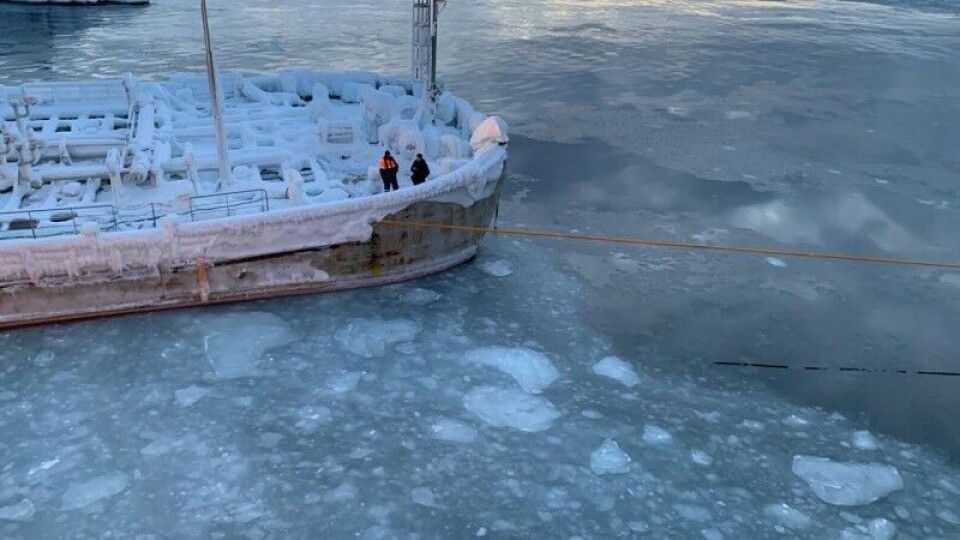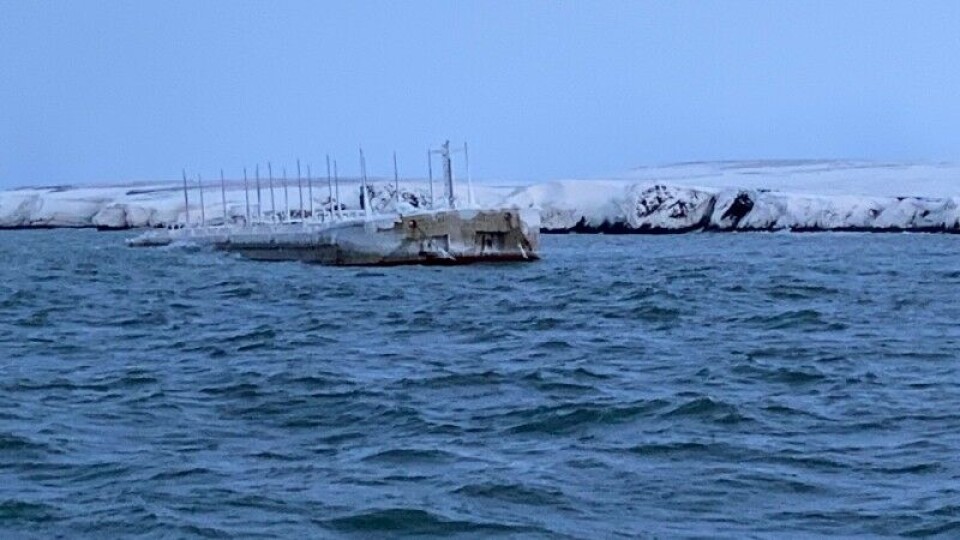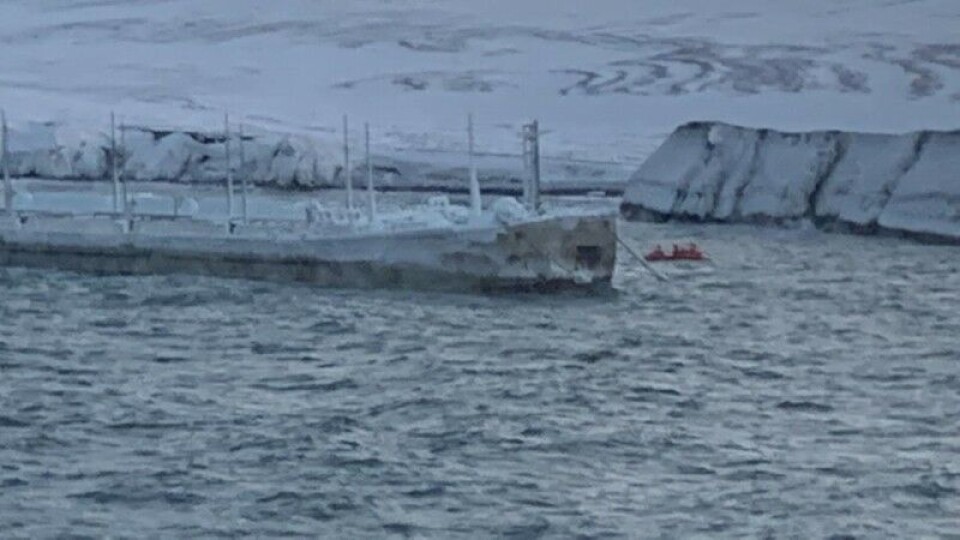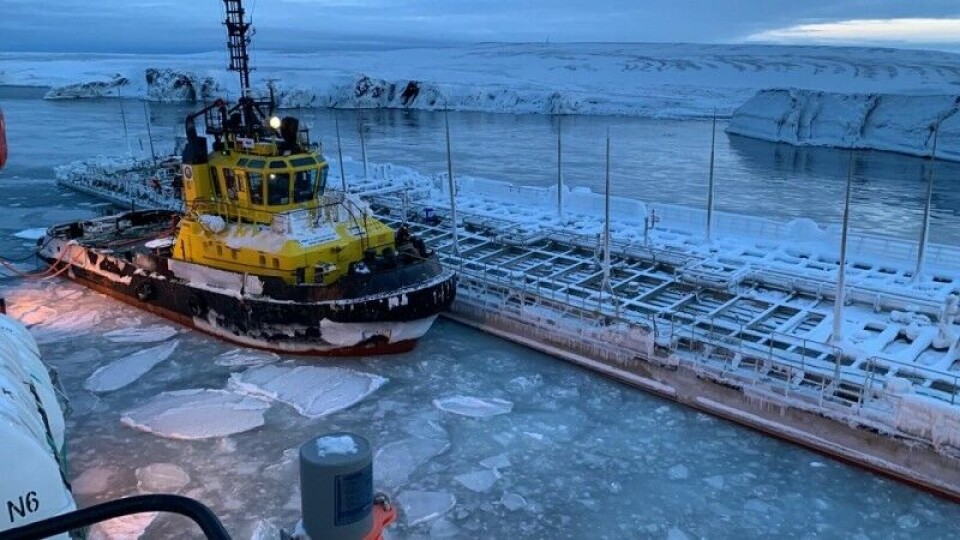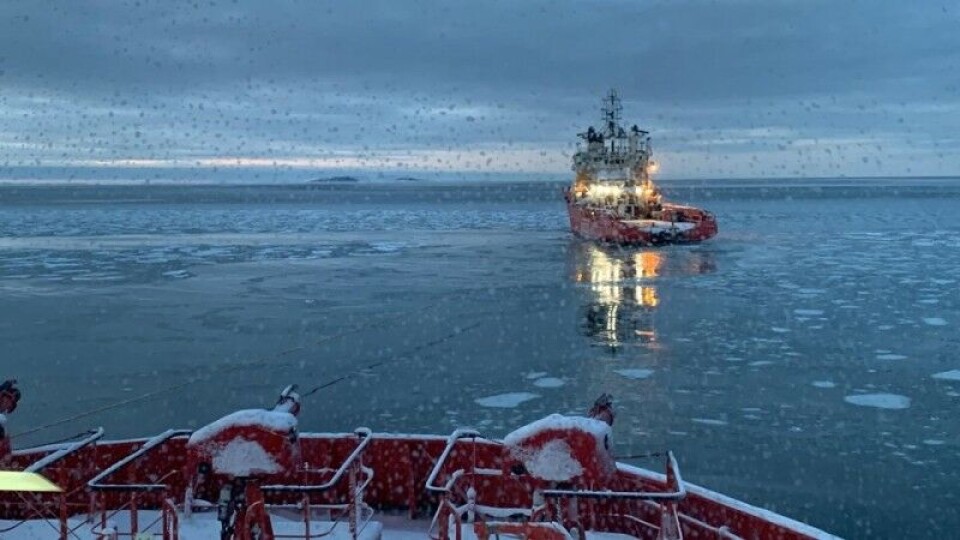Major disaster averted in icy Kara Sea after two oil barges ran aground
Russia’s Marine Rescue Service describes the unprecedented salvage operation as "extremely difficult" as ice was rapidly building up on the structures of the barges in the freezing cold polar night. The environmental group Bellona now calls on a ban on transporting fuel oil during icy Arctic winter months.
“There was a real threat of an ecological catastrophe comparable to the emergency near Norilsk,” is the wordings used by Rosmorrechflot, the Federal Agency of Marine and Rivertransport, when informing about the until now unreported incident with two oil barges that ran aground at the northwestern tip of the Vaygach island on November 24 last year.
One of the two huge barges contained 7,000 tons of diesel fuel, while the other was loaded with 170 tons of kerosene (paraffin).
Both barges were towed by the same sea tug, the “Pak“ operated by Lena River United Shipping Company based in Yakutia.
Sudden freeze-up
Destination for the two barges is not disclosed, but supplies of fuel oil to Russia’s remote Arctic regions are normally taking place during autumn with departure ports like Murmansk and Arkhangelsk. Last fall, however, saw a sudden freeze-up and quickly accumulating sea-ice on the Northern Sea Route, including the Kara Sea.
Vaygach, where the two oil barges ran aground, is the island separating the archipelago of Novaya Zemlya from the mainland, most known for the Kara Gate, the western entrance to the Northern Sea Route between Europe and Asia.
When the distress call was made, the tug with the barges was sailing in stormy winds, waves, drifting ice and polar darkness, Rosmorrechflot informs. The salvage tug “Beisug” was at the moment in the Kara Gate and came to the site of emergency after only 35 minutes.
Then, the two oil barges MN-4001 and MN-4002 were already on the rocks. Two other rescue ships were sent to the site with additional equipment. Later, also a support vessel departed from Murmansk to join the rescue operation.
Rescuers had a hard time cracking the ice that had built up on the deck of the barges. The ice cover was about 30-50 cm thick, according to information published by Russia’s Marine Rescue Service last week.
Two months in shadow
It is unclear why it took nearly two months from the accident happened till information was made public. One reason could be that the rescued barges first last week were delivered to port in Severodvinsk in the White Sea and the danger of any spill now is over.
It is local newspaper Severny Rabotchy that informed about the arrival of the barges to Severodvinsk.
The rescue operation was very difficult and the crew of the salvage vessels were working around the clock to avoid a major oil spill in the fragile Arctic marine environment.
Pulling the barges off the rocks was considered unsafe. This would certainly have led to additional and massive damage to the barge hulls with a guaranteed spill of oil products, the rescue service said.
Work was further complicated by limited depths, windy weather, waves, shifting ice, temperatures down to minus 20 degrees Celsius and constantly icing on the barges. The rescue workers had to manually break the ice to gain access to hatches and other structures and to reduce the weight of the barges.
Diving inspections revealed that the ballast tanks on both barges were pierced. Two tankers came to the site and about 5,000 tons of the diesel fuel were reloaded.
The first barge was removed from the rocks during December, soon followed by the other.
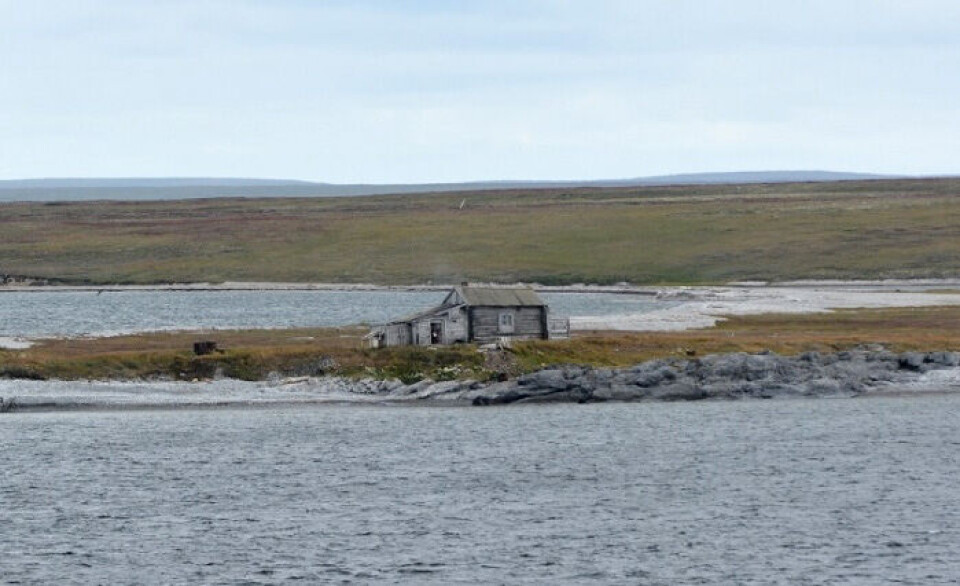
After additional diving inspections, a plan was made on how to tow the barges to a safe port. The towing operation is described as taking place in “extremely difficult ice conditions”, it got “repeatedly stuck” in dense ice, with ice fields at some places with a thickness up to one meter. The crew had to fight rapidly icing on deck during the towing operation through the eastern part of the Barents Sea and the White Sea to Severodvinsk near Arkhangelsk.
Thanks to competent, well-coordinated actions by the marine rescuers they managed to prevent an environmental disaster in Russia’s Arctic zone, the emergency services concluded.
Deeply worried
Sigurd Enge, an expert on Arctic shipping and marine environment with the Bellona Foundation in Oslo, is deeply worried about what happened.
“It is only luck that this didn’t ended in a disastrous oil spill,” he said in a phone interview with the Barents Observer.
“It clearly shows that the Northern Sea Route is not ready for year-round sailings. Towing barges with fuel oil are seriously jeopardizing the Arctic environment. We can’t base emergency preparedness on luck,” Sigurd Enge said.
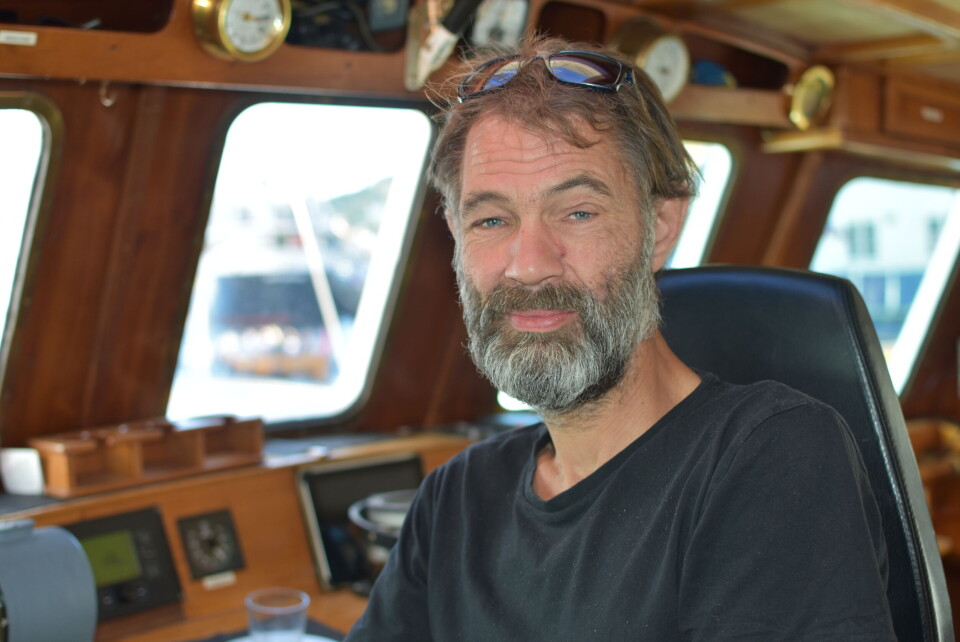
Enge has first-hand experiences from his younger days in Arctic waters with shrimp fishery north in the Barents Sea, around the archipelago of Svalbard.
“Icing on vessels happens very quickly,” he explains. “In worst conditions, sea spray icing occurs when freezing cold wave-generated spray comes in contact with any structure on the boat.”
“Seawater can freeze to ice on the deck within seconds,” he noted.
In December 2020, icing was believed to cause the sinking of the Russian fishing vessel “Onega” near Novaya Zemlya in the eastern Barents Sea. Only two of the 19 crew members were rescued.
Sigurd Enge said that danger of icing makes towing and emergency navigation especially hard.
“You can’t sail against the wind. That will create even more spray that freezes on the vessel.”
“We in Bellona strongly recommend imposing a ban on towing barges with fuel oil in icy waters, especially during polar night,” Sigurd Enge said.
“It is simply too risky.”

